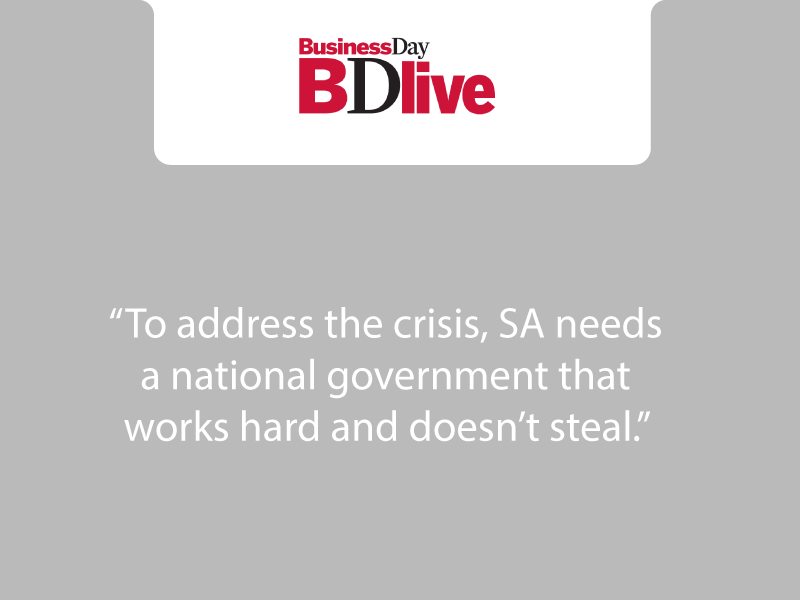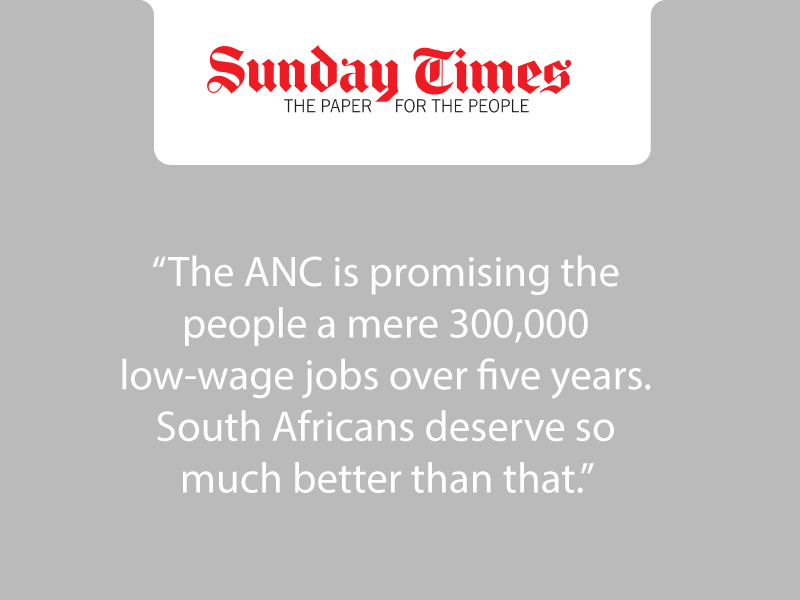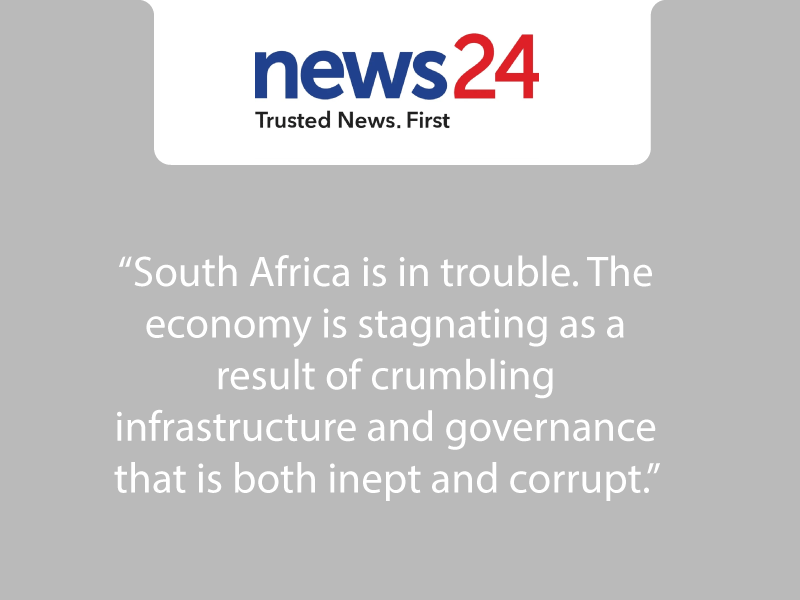
South Africa’s greatest challenge is to reduce unemployment. Official figures show that 41 per cent of South Africans wanting to work did not find a job in 2001. Something must be done.
But we have to be careful to choose the right ‘something’.
The only way in which South Africa can achieve large increases in employment and significantly reduce poverty is by doubling economic growth from our current 2-3 per cent to 6 per cent a year. To make this essential shift the country needs dramatic action.
Government’s commendable macroeconomic reforms, including strong fiscal discipline, sound monetary policy, an increasingly open trade regime, and so on all add up to a necessary but not sufficient foundation for increased economic growth.
We need to go much further, particularly in dealing with crime, improving infrastructure, freeing up the labour market, dramatically improving the quality of schooling, efficient public service provision involving extensive private sector involvement, recruiting many skilled immigrants, and a range of other reforms. We need to do all this to ensure an environment that is ‘super-attractive’ to investors and the maximum expansion of jobs.
Effective management of comprehensive reform needs strong leadership and consistent follow-through. Hard political choices will have to be made and stuck to for many years.
International experience
International experience shows that difficult reforms are easier to manage and stand a better chance of being successful if they shelter behind transitional measures that are quicker and easier to put in place. But transitional programmes should not be a Band-Aid, disguising problems temporarily. Nor should they create new problems by requiring unsustainable levels of public expenditure. Transitional measures should be compatible with the overall direction of reform.
South Africa should embark on a large-scale, labour-intensive public works strategy as a significant contribution to reducing unemployment. Popular perceptions of public works are often inaccurate; many people see them as schemes that make people ‘dig a hole one day and fill it in the next’.
Properly designed labour-intensive public works are very different. They provide training and work experience to people who sorely lack both. They do what no other unemployment or poverty relief system can: create and maintain socially useful and economically vital infrastructure (roads, schools, facilities in informal settlements and rural areas, waste collection, street cleaning, storm water drains, infrastructure for small-scale farming). Labour-intensive public works start to show results relatively quickly. Urban clean-up programmes, for example, can be implemented within a year. Unlike income grants, which require immense state capacity to target intended beneficiaries while avoiding fraud, low-wage labour-intensive public works are self-targeting. Unlike grant systems they are easily stopped when no longer necessary.
National and provincial government departments operate several small public works programmes. Not all of these projects would fit the strict definition of a properly designed labour-intensive public works programme. None appears to have benefited from rigorous independent evaluation. The treasury is not confident that these initiatives have been efficient users of public money. Most importantly, these are not large programmes. In 2000-1 all of them combined created no more than 80 000 temporary jobs, a total unlikely to have risen significantly since then.
The main reason why these programmes have stayed small is because they lack the involvement of the only South African sector that has proved it can construct infrastructure on a really large scale: the private sector (and corporatised state enterprises such as Telkom and Eskom). Experience of decades across a wide range of areas including housing, transport, electricity shows state departments cannot deliver at scale on their own.
Private sector involvement
A labour-intensive public works strategy must grow to a really large scale to have the kind of effect on jobs and on the politics of reform that the country urgently needs. The strategy has to be designed in such a way that it can realistically grow to a size that has a significant effect on unemployment and the country’s morale. This will require extensive private-sector involvement.
Such an ambitious approach is affordable within the country’s financial constraints. There is enough public money (R2 billion-R3 billion) already available in the state’s budget to fund the first few years of a dramatically largescale labour-intensive public works initiative. And to target the poor effectively, be sustainable and benefit the largest number of poor people, wages paid on labour-intensive public works should be low well below the minimum wage in the formal, capitalintensive construction industry.
Last July, and again this year, the president and cabinet indicated support for a ‘massive expanded public works programme’. These statements of intent are to be welcomed. What is crucial now is to turn words into action and adopt an effective strategy for implementation.
The private sector needs to be a full participant from the start in designing the components of a delivery partnership. Our research clearly indicates that locating the labour-intensive public works in the public works department or a vastly overloaded local government department will fail.
A large-scale public works strategy would bring together government and business to build infrastructure, provide training and create jobs for the unemployed. Provision of a significant number of jobs, albeit temporary, would considerably help the cabinet manage the difficult politics of economic reform.
Creating new groups of beneficiaries and showing all South Africans in a tangible, media-friendly way that something is being done would enable the cabinet to be bolder and quicker with reforms needed to lift the country on to the higher growth path required to reduce unemployment and poverty in the longer term.
- This article by Ann Bernstein and Simon Dagut is based on the CDE publication ‘Labour-intensive public works: Towards providing employment for all South Africans willing to work’ (April 2003).




